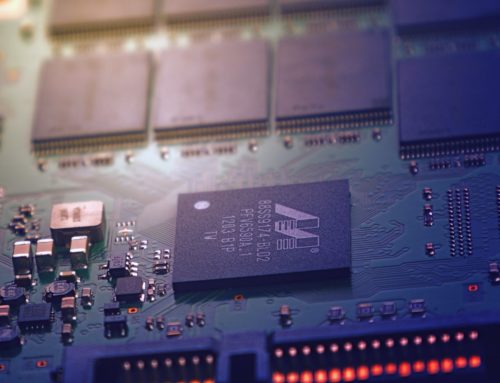Imagine a world where the deepest recesses of your mind could seamlessly connect with the endless possibilities of technology. A realm where the veil between your thoughts and external devices is lifted, allowing a harmonious exchange of information. For decades, scientists and visionaries alike have embarked on a captivating quest, tirelessly seeking a holy grail known as the Brain-Computer Interface (BCI) — the elusive bridge that speaks your mind. Undeterred by the countless obstacles and challenges that lie in their path, these intrepid explorers have valiantly ventured through uncharted neurological territories, driven by an insatiable curiosity to unlock the secrets of the human brain. As we embark upon the labyrinthine journey that lies ahead, let us delve deep into the captivating tale of the long search for a BCI that transcends the boundaries of thought, promising an extraordinary era where technology becomes an extension of our very consciousness.
Table of Contents
- 1. Unveiling the Mysterious Realm: Unlocking the Secrets of Brain Computer Interfaces
- 2. From Science Fiction to Reality: The Quest for a Mind-Reading Device
- 3. Unleashing the Power of Thought: Exploring the Limitless Possibilities of Brain Computer Interfaces
- 4. A Journey Through Time: Tracing the History of Brain Computer Interface Development
- 5. Cracking the Code: Breaking the Barrier Between Brain and Machine
- 6. Revolutionizing Communication: Harnessing the Potential of Brain Computer Interfaces for Speech
- 7. A New Era Dawns: Promising Breakthroughs in the Pursuit of a Mind-Controlled Voice System
- 8. Towards a Silent Revolution: What Lies Ahead in the Future of Brain Computer Interfaces
- Q&A
1. Unveiling the Mysterious Realm: Unlocking the Secrets of Brain Computer Interfaces
Step into the extraordinary world of brain computer interfaces (BCIs) as we embark on a journey of discovery, unraveling the enigmatic realm of the human mind. BCIs have long been shrouded in mystery, but we are here to unlock their secrets and shed light on their awe-inspiring potential.
In this captivating exploration, we will delve into the fascinating history of BCIs, tracing their evolution from conceptual ideas to groundbreaking technologies. We will examine the intricate interplay between the brain and computer systems, and how BCIs have revolutionized the way we interact with technology.
- Uncovering the Origins: Explore the roots of BCIs, from early experiments with invasive techniques to the development of non-invasive approaches that have opened up new possibilities.
- Unleashing the Power: Witness the mind-boggling capabilities of BCIs, such as enabling individuals with paralysis to regain control of their limbs or allowing communication through mere thoughts.
- Uncharted Frontiers: Embark on a thrilling journey as we venture into the unexplored territories of BCIs, investigating their potential applications in fields like medicine, gaming, and beyond.
Join us as we peel back the layers of mystery, uncover the inner workings of BCIs, and marvel at the incredible ways in which these technologies are reshaping our understanding of the human mind.
2. From Science Fiction to Reality: The Quest for a Mind-Reading Device
Science fiction has long captivated our imaginations with visions of mind-reading devices that can decode our thoughts and intentions. However, what was once confined to the realm of fantasy is now becoming a reality, thanks to significant advancements in neuroscience and technology. Researchers around the world are fervently working towards developing mind-reading devices that can decipher the intricate workings of our brain.
One of the areas of focus in this quest is the development of brain-computer interfaces (BCIs), which allow direct communication between the brain and an external device. These interfaces can detect and interpret brain activity, giving us a glimpse into the mind’s inner workings. With BCIs, it is possible to analyze neural patterns associated with specific thoughts and convert them into understandable commands or even text. The potential applications of mind-reading devices are vast, ranging from assisting individuals with paralysis to communicate, understanding and treating mental health disorders, to unraveling the mysteries of consciousness itself. As we continue to unlock the secrets of the human mind, we are inching closer to turning the once-farfetched idea of mind-reading into a tangible reality.
3. Unleashing the Power of Thought: Exploring the Limitless Possibilities of Brain Computer Interfaces
Brain computer interfaces (BCIs) have revolutionized the way we interact with technology, unlocking a whole new world of possibilities. With BCIs, we can now tap into the extraordinary power of our thoughts and merge them seamlessly with digital systems. The potential applications of BCIs are limitless, offering immense opportunities for individuals and society as a whole.
One of the most exciting prospects of BCIs is the ability to enhance communication. Imagine being able to transmit your thoughts directly to another person’s mind, eliminating the need for spoken or written language. This could revolutionize the way we connect with each other, breaking down barriers of language and disability. Additionally, BCIs hold the potential to revolutionize healthcare by allowing for more accurate and efficient diagnoses. Doctors and researchers can gain unprecedented insight into brain function and use this information to develop personalized treatment plans. BCIs could also offer new solutions for individuals with physical disabilities, enabling them to regain control of their movements and interact with the world in ways they never thought possible.
4. A Journey Through Time: Tracing the History of Brain Computer Interface Development
Brace yourself for a captivating voyage as we embark on a journey through the annals of time, tracing the fascinating history of Brain Computer Interface (BCI) development. As humanity’s quest for achieving seamless communication between the mind and machines continues to push the boundaries of innovation, let us retrace the remarkable milestones that have brought us to the forefront of this cutting-edge technology.
Firstly, we journey back to the late 1920s when the first rudimentary attempts at connecting the brain to external devices began. It was German neurologist Hans Berger who pioneered the use of electroencephalography (EEG), leading to the discovery of the electrical brain activity we now measure with precision. This milestone laid the groundwork for future breakthroughs in BCI technology.
- The Birth of Invasive BCI: In the 1960s, scientists took the first bold step towards direct brain-machine interaction. Invasive BCI, involving the implantation of electrodes directly into the brain tissue, emerged as a groundbreaking technique. This development opened up new possibilities and initiated a wave of progress in the field.
- Advancements in Non-Invasive BCI: Fast forward to the 1970s, and non-invasive BCI technologies started gaining momentum. Techniques like electrooculography (EOG) and movement-related cortical potentials (MRCP) paved the way for more accessible brain-computer interfaces. These breakthroughs marked a shift from invasive to non-invasive methods, offering greater comfort and ease of use.
5. Cracking the Code: Breaking the Barrier Between Brain and Machine
Scientists and researchers around the globe have been tirelessly working towards bridging the gap between the human brain and machines. The breakthroughs in neurotechnology have opened up a world of possibilities, revolutionizing the way we interact with technology. The integration of brain-computer interfaces (BCIs) is rapidly advancing, allowing individuals to directly control devices using nothing but their thoughts.
One of the most promising areas of development in this field is the decoding of brain signals. By analyzing the intricate patterns and electrical signals emitted by the brain, researchers are decoding the complex language of the mind. This allows them to not only understand what commands the brain is sending, but also to translate those commands into actionable instructions for machines.
- Imagine a world where paralyzed individuals can regain their independence by controlling robotic limbs with their thoughts.
- Picture a future where individuals suffering from communication disabilities can express their thoughts and emotions through text or speech synthesizers, simply by thinking.
- Envision a time where brain-controlled exoskeletons enable individuals to walk again, overcoming physical limitations.
These breakthroughs in cracking the code between the brain and machines have the potential to transform the lives of millions. However, there are still numerous challenges to overcome before this technology becomes widely accessible. Ethical concerns, data privacy, and the need for extensive testing and safety measures are just a few of the hurdles that need to be addressed. Nevertheless, the remarkable progress made in recent years brings us closer than ever to unlocking the full potential of the brain-machine interface, opening doors to a future where humans and machines seamlessly intertwine.
6. Revolutionizing Communication: Harnessing the Potential of Brain Computer Interfaces for Speech
Advancements in technology have opened up new possibilities for communication, and one such groundbreaking innovation is the development of Brain Computer Interfaces (BCIs) for speech. These interfaces have the potential to revolutionize the way we communicate by allowing individuals to directly translate their thoughts and intentions into spoken words, bypassing traditional methods that may be limited by physical disabilities or speech impairments. With BCIs, the power of the mind becomes a powerful tool for expression.
Imagine a world where individuals with conditions such as Locked-In Syndrome or severe speech impairments are able to effortlessly communicate with others. BCIs offer hope by tapping into the vast potential of the human brain, enabling direct communication pathways that were once unimaginable. By analyzing brain activity and decoding specific patterns, BCIs can interpret the user’s intended speech and generate audible output in real-time.
- BCIs provide a communication lifeline for individuals who have lost the ability to speak due to neurological conditions or injuries.
- These interfaces have the potential to enhance overall communication accessibility, leveling the playing field for individuals with speech impairments.
- BCIs can be customized to adapt to different user needs, ensuring a personalized and intuitive speech experience.
With continuous advancements in BCI technology, the dream of seamless communication for all is becoming closer to reality. It is an exciting era where the limitations imposed by physical barriers are being shattered, paving the way for a future where words can flow effortlessly from the mind to the world.
7. A New Era Dawns: Promising Breakthroughs in the Pursuit of a Mind-Controlled Voice System
The field of mind-controlled voice systems is on the cusp of a revolutionary breakthrough, promising a new era in human-machine interaction. Researchers and engineers have been tirelessly working to develop technologies that enable individuals to communicate solely through the power of their thoughts, bypassing the need for physical speech. In recent years, several pioneering advancements have emerged, offering great hope for those with speech impairments and disabilities, as well as potential applications in other fields.
One groundbreaking development involves the use of brain-computer interfaces (BCIs) to decode brain signals and convert them into spoken words. By leveraging machine learning algorithms, BCIs are becoming increasingly accurate in deciphering brain activity associated with speech. This holds immense potential for individuals who are unable to speak due to neurological conditions like locked-in syndrome or paralysis. Moreover, these advancements open up possibilities for the development of silent communication systems for military operations or secret services, which could revolutionize covert operations.
8. Towards a Silent Revolution: What Lies Ahead in the Future of Brain Computer Interfaces
As technology continues to advance at an unprecedented pace, brain-computer interfaces (BCIs) are rapidly emerging as a transformative field. The possibilities that lie ahead in the future are both exciting and profound, presenting us with the potential for a silent revolution. Here are some of the key developments we can expect to see in the coming years:
- Enhanced Communication: Imagine a world where individuals with speech impairments can express their thoughts and feelings directly through their minds. BCIs offer the promise of enabling seamless communication between humans and machines, which can greatly benefit those with conditions such as locked-in syndrome or amyotrophic lateral sclerosis (ALS). This breakthrough could revolutionize not only personal interactions but also fields like healthcare, where faster diagnosis and treatment could be facilitated through direct brain activity analysis.
- Improved Motor Control: With further advancements in BCIs, we can anticipate significant progress in enhancing motor control in individuals with disabilities. For those living with paralysis, conditions such as stroke, or spinal cord injuries, BCIs hold the potential to restore lost functionality. By linking their minds with external devices or robotic prosthetics, individuals may regain the ability to move, grasp objects, or even walk again.
In the vast expanse of human imagination, the realm of science fiction often blurs the lines between reality and possibility. Dreams of a world where thoughts can be translated into words, where the mind can speak and be understood without the confines of vocalization, have long fascinated and captivated both scientists and dreamers alike.
Throughout the annals of scientific discovery, the quest for a brain-computer interface that can speak one’s mind has been an elusive pursuit. But as we delve into the extraordinary innovations and tireless efforts of researchers, a glimmer of hope emerges – a whisper of what could be the future of communication itself.
From the moment humanity became aware of the intricate workings of the brain, an insatiable curiosity has driven us to unlock its mysteries. Countless experiments, trials, and even failures paved the way for the small triumphs we see today. The vast array of possibilities offered by brain-computer interfaces holds immense potential: enabling those with speech impairments to communicate effortlessly, allowing individuals to control devices with just their thoughts or even opening up avenues for understanding the depths of consciousness.
While scientists have succeeded in creating rudimentary interfaces that can interpret certain brain signals, we are in the midst of a perpetual dance, forever seeking the perfect harmony between mind and machine. The path ahead is uphill, fraught with challenges that require delicate precision and perseverance. But the indomitable spirit of those intrepid pioneers, their unwavering dedication to pushing scientific boundaries, carries us ever closer to a reality where the mind’s deepest musings can find their voice.
Indeed, the road toward a brain-computer interface that speaks our minds is fraught with obstacles and unforeseen complexities. Yet, every painstakingly small step we take brings us closer to realizing this once-distant dream. As humanity continues its unwavering quest to decipher the language of our thoughts, we must harbor a sense of awe for the endless possibilities that lie before us, where the boundaries between mind and machine blur, giving rise to a new era of communication.
So let us remain bold and hopeful, daring to imagine the moment when the realms of science fiction seamlessly meld with reality. For in that moment, when the mind’s tapestry of words is woven into the fiber of our technological marvels, a symphony of connection will resound, and the world will truly hear the profound melodies that course through each and every one of us.




Leave A Comment